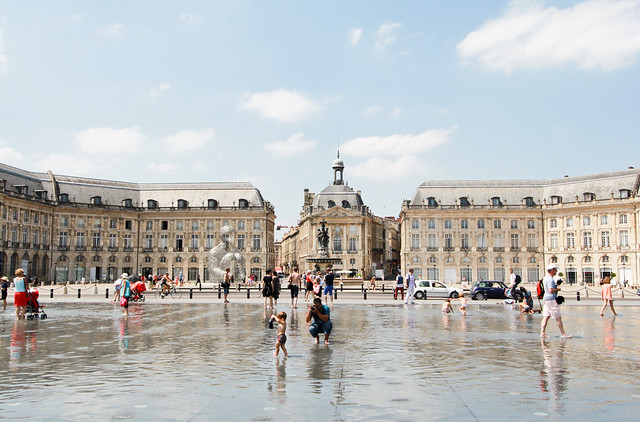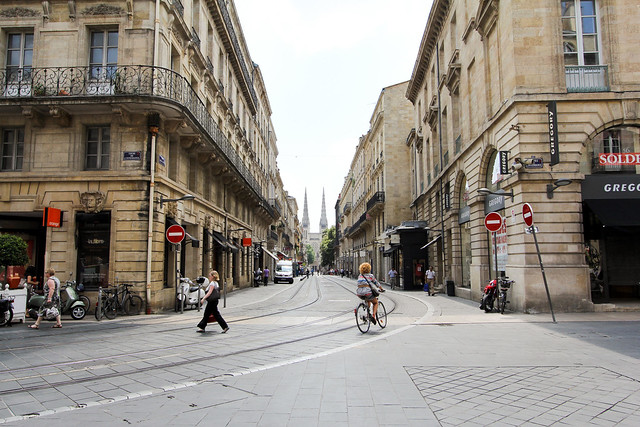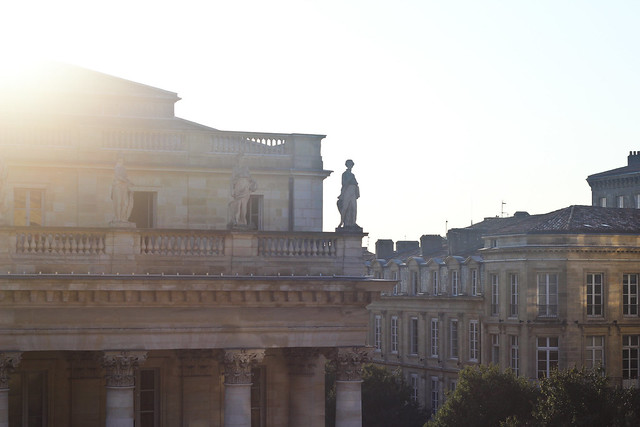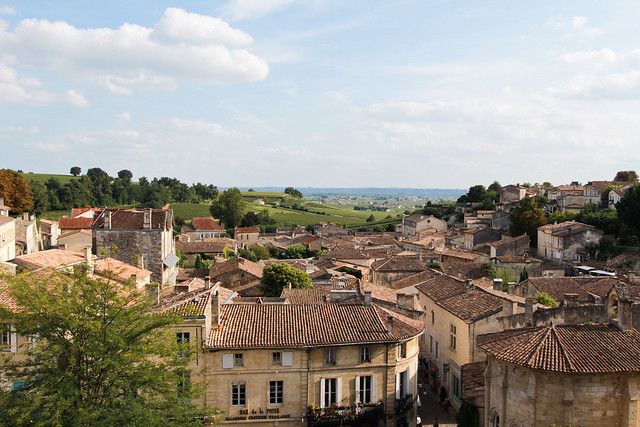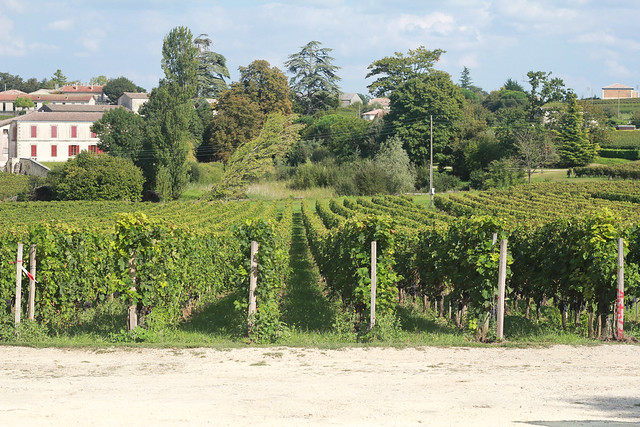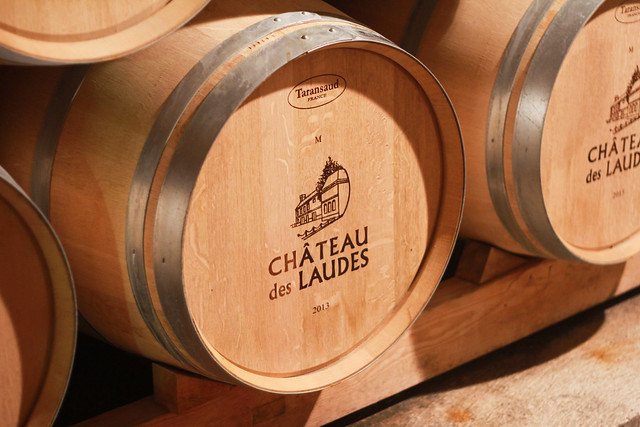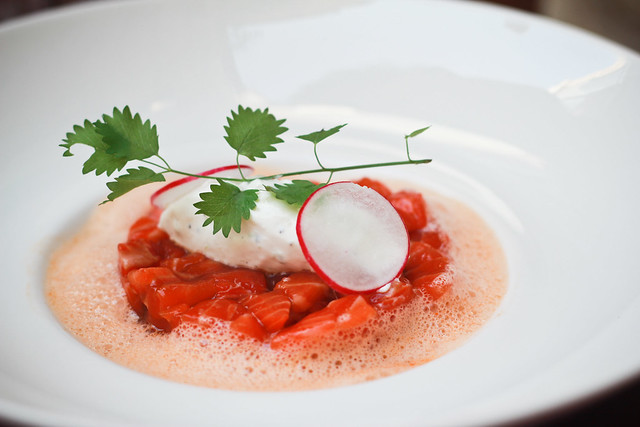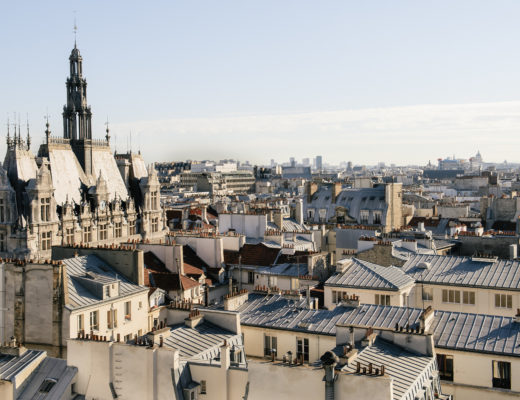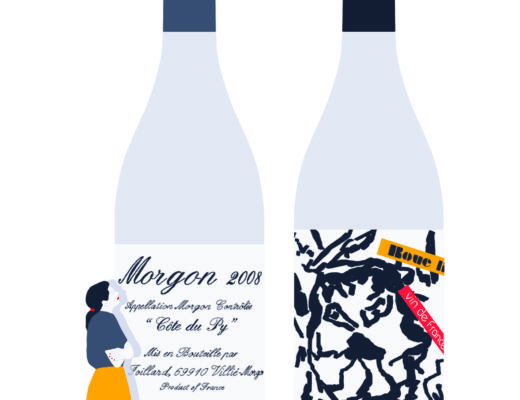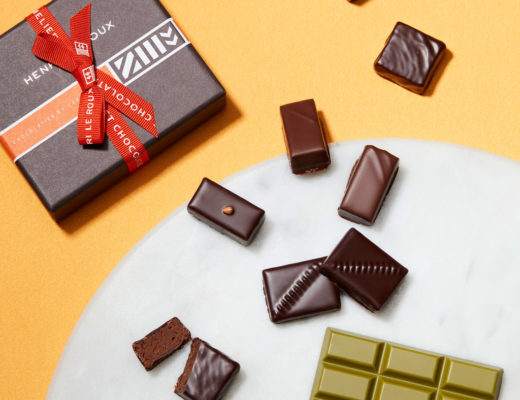There are countless reasons to love Bordeaux – its languid pace, balmy climate, 290,000 some acres of vineyards and its storied architecture. But what’s most interesting about the wine capital today is less the ways in which the past is being preserved and rather how the city is defining its future, driven to earn the spotlight as a cultural fixture among leading European capitals.
In the years following Mayor Alain Juppé’s venerated urban regeneration project, which effectively revived a lifeless, soot encrusted town from irrelevancy, Bordeaux has been gestating ambitious plans for continued cultural improvements.
In 2015, the region will inaugurate a striking new multifunction stadium (the largest on the French Atlantic coast) for sporting events and concerts, a space already set to host the EURO 2016 (European Football Championship). In 2016, their Center for Wine and Civilization will open to honor its century-long tradition of winemaking and 2017 will mark the completion of the TGV high-speed train line, putting Bordeaux only two hours from Paris. And that’s saying nothing of the expanding dining and artistic class.
Last summer was my first introduction to the city and we returned for a long weekend in early September to explore what we missed the first time around, including the obligatory vineyards. We returned to Paris even more smitten with Bordeaux than before and with an updated life plan that includes, down the road a few years, a relocation. Here are a few reasons why:

1// The Pace
Bordeaux doesn’t have a truly southern pace but the vibe is decidedly more relaxed than in Paris where locals are perpetually agitated and over-hurried. Bordeaux’s speed is aided largely by an emphasis on reducing dependence on cars and their attendant disruptions.
As one of Europe’s most bike-friendly cities, cycling is widespread as a primary means of transportation. Those who don’t bike, walk or use the city’s electric tramway. It’s all very appealing and certainly pried loose a latent desire for a change of rhythm.
2// The Architecture
As beings on the perpetual path to personal distinction and singularity, uniformity is the antithesis to self-achievement (fashion trends come in to complicate this but let’s roll with it). Ordinarily I would agree that sameness is dreadfully dull – after all, life in Paris is cosmopolitan, cultural differences legion. But from an architectural perspective, my feelings err toward harmony and consistency. When stainless steel and glass behemoths that lord over the population are lauded in modern, urban architecture, a more vintage interpretation does hold value.
In Bordeaux, that is especially true. The former Sleeping Beauty city underwent a laser scrubbing some years back as part of the mayor’s urban refurbishment efforts and revealed 18th century limestone façades fit once again for marveling. They’re low-lying (by law, new construction must respect strict height regulations), never obstructing the view, and punctuated by medieval vestiges which are equally as enchanting – one of the oldest belfries in France, the 13th century Grosse Cloche bookends the ancient city centre on one side, the Place des Quinconces on the other.
Most of the newer constructions are emerging on the other side of the river, lending a harmonious balance. For a glimpse at what is to come, check out this recent article in Wallpaper Magazine.
3// The proximity to nature
The city’s proximity to the Atlantic Ocean is a boon for its winemaking, to be sure, but it’s also an appealing attribute for those happiest with a blend of big-city zeal and country calm. The Arcachon Bay, with its beaches, pine forests and tallest sand dune in Europe (La Dune du Pilat) is less than an hour by car. The 8th century village (and UNESCO World Heritage Site) Saint-Emilion and its 5,500 hectares of vineyards are within a 30 minute drive and Barcelona is a mere 1-hour flight.
4// The beating heart of winemaking

With some 8,000 wine producers, the region’s rich tradition in winemaking attracts 5 million visitors a year and is climbing rapidly. Chinese youth intrigued by the wine trade are flocking to Bordeaux to learn, then stick around after their studies to guide Château owners with the daunting task of selling to deep-pocketed Chinese wine aficionados. It’s lucrative business that solidifies Bordeaux and its wine region as the world’s oenological hub.
We visited the very successful Château Figeac, among the top 15 of the 8,000 producers in the region and ranked the 1er grand cru, toured the grounds, compared their wines from three different years and learned about what makes their vineyard so unique (you’ll have to visit to find out!). Having gone into the experience with nary a passing knowledge of reds or how to articulate their distinct flavors, the visit made clear why so many people around the world construct careers and passion around Bordeaux wines. But our second Château visit of the day made a much different impression.
A moment I’ll never forget from my visit to the Château des Laudes in Saint-Emilion was an exchange during the tasting. Owner Christian Gombaud, an older gentleman with a messy shock of gray hair and a cheeky sense of humor, schooled us on the right ways to taste wine (evidently, entire sets of the wine-drinking population have been doing it wrong for ages, including at nearby Châteaux). First, you must smell the wine within the 6-7 seconds that follow the pour, a golden window of opportunity before serving. Then, briskly swirl the wine for a solid 20 seconds to aerate before smelling again and taking the first sip. Before the second, a 10 second swirl and sniff. The difference in taste and aroma, he promised, would be remarkable. He was right.
He continued with his instruction by advising that any wine not for drinking yet (matured) be decanted one hour prior to consuming. Pour into the decanter, put on the top, shake for a few seconds and let settle. After 30 minutes, remove the top and let in air until serving.
All these bits of instruction piqued my curiosity and led me to ask a question that, I’m ashamed to say as a French citizen, attests to my oenological inexperience.
“Do you have to decant white wine too?”, I asked with shaky confidence. Either I’d offend him with my sheer ignorance or he’d be amused and react pedagogically. His response fell somewhere in the middle.
“Ehhhh”, he whined “don’t drink white wine, it’s poison!”
The entire group, myself included, erupted into laughter. Christian clarified his remark.
“Red wine is the only medicine you need. Both of my grandmothers lived to be over 100 years old and drank a glass of red for breakfast everyday. No bread, no fruit, just wine”.
He smiled widely as he shared his story but he was entirely serious. As his family’s lifeblood, wine as a salve for all that ails was anchored in firsthand experience – and became a compelling argument for me to develop a taste for red. I have Christian of Château des Laudes to thank for such an enlightening experience.
5// The cuisine
What pairs beautifully with superior wine? Superior eats. Fortunately, Bordeaux is shaping up to be a worthy destination of its own for culinary travelers. Gastronomic tables have always had a presence but lately, it’s the accessibly-priced neo-bistrots, wine bars and canteens that have been shaping the city’s dining scene. Among my favorites:
La Cagette: a hip canteen at the Place du Palais that plays up seasonal produce on an ever-rotating, eminently affordable menu. Inspired by the abundance of fresh flavors in Californian, Lebanese and Italian cuisines, the owners blended a host of influences to craft a style of their own. On the plate, this translates to veggie-focused salads ($12), hearty baguette sandwiches (Bayonne ham with sheep’s milk cheese and pesto from $8), flavorful mains (think beef tartare with pumpkin, truffle oil and potatoes from $16) and a tapas-style offering in the evening with locally sourced wines.
Une Cuisine en Ville: the Michelin-starred restaurant from chef Philippe Lagraula he moved from Dax to a residential pocket of Bordeaux in 2012. The dining room’s pared back design (think paper napkins, hand-illustrated wallpaper, and Scandinavian-inspired furnishings) keeps the focus on a colorful, market-fresh offering spiced up with South American flavors like rocoto and Aji Amarillo chili.
Miles: a one-year old neo-bistrot from an international crew of young chefs trained at Ferrandi in Paris. The surprise menu varies every two weeks and is entirely inspired by each of their family backgrounds. More on this spot in my review for the New York Times HERE!
For coffee: head straight to Black List Coffee which overlooks the Hôtel de Ville and brews Belleville Brûlerie coffee straight from Paris.
For more photos, check out my Bordeaux Flickr album.
Many thanks to Bordeaux Executive Travel for an excellent Château visiting experience!





